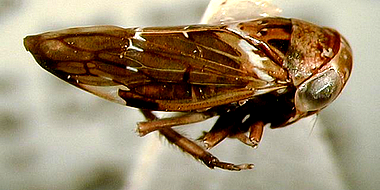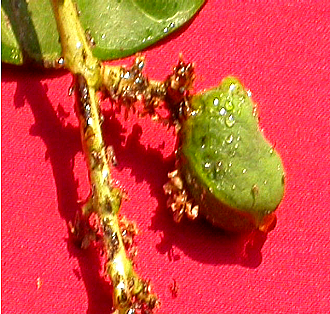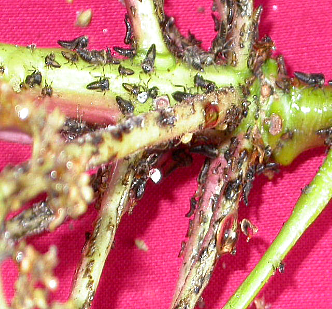Crop Protection :: Pests of Mango
Mango hoppers: Idioscopus niveoparsus,I. clypealis, Amirtodus atkinsoni
| Symptoms of damage |
- Nymphs and adults suck the sap of inflorescence
- Withering
- Shedding of flower buds and flowers
- Presence of honey dew secrecation on lower leaves and development of sooty mould.
- Clicking sound - movement of jassids amidst leaves.
- Hoppers provide shelter in the cracks and crevices of the barks on the tree
|
| Identification of pest |
- Nymph - Nymphs pale yellow, very active and hide in lower shoots or in cracks in the barks.
- The insect appears in February when mango trees come to flowering.
- Adult
- a. Idioscopus niveoparsus; Adults: dark with wavy lines on wings and three spots on scutellum.
- b. I. clypealis; Adults: small, light brown with dark spots on the vertex and two spots on scutellum.
- c. Amirtodus atkinsoni; Adults: large, light brown with two spots on scutellum.
|
| Management |
- Avoid close planting, as the incidence very severe in overcrowded orchards.
- Orchards must be kept clean by ploughing and removal of weeds.
- Spray two rounds of acephate 75 SP@ 1g/lit or phosalone 35 EC@ 1.5 ml/li
OR
- First spray at the time of panicle emergence , second spray two weeks after first spray.
- Wettable sulphur @ 2 g/lit may be sprayed after spraying carbaryl to avoid mite resurgence.
- The mixture toxaphene with sulphur (1:1) have been reported to be effective against pest.
- Neem oil 5 ml/lit of water can be mixed with any insecticides
- Spray 3 per cent neem oil or neem seed kernel powder extract 5 per cent
|
|
|



